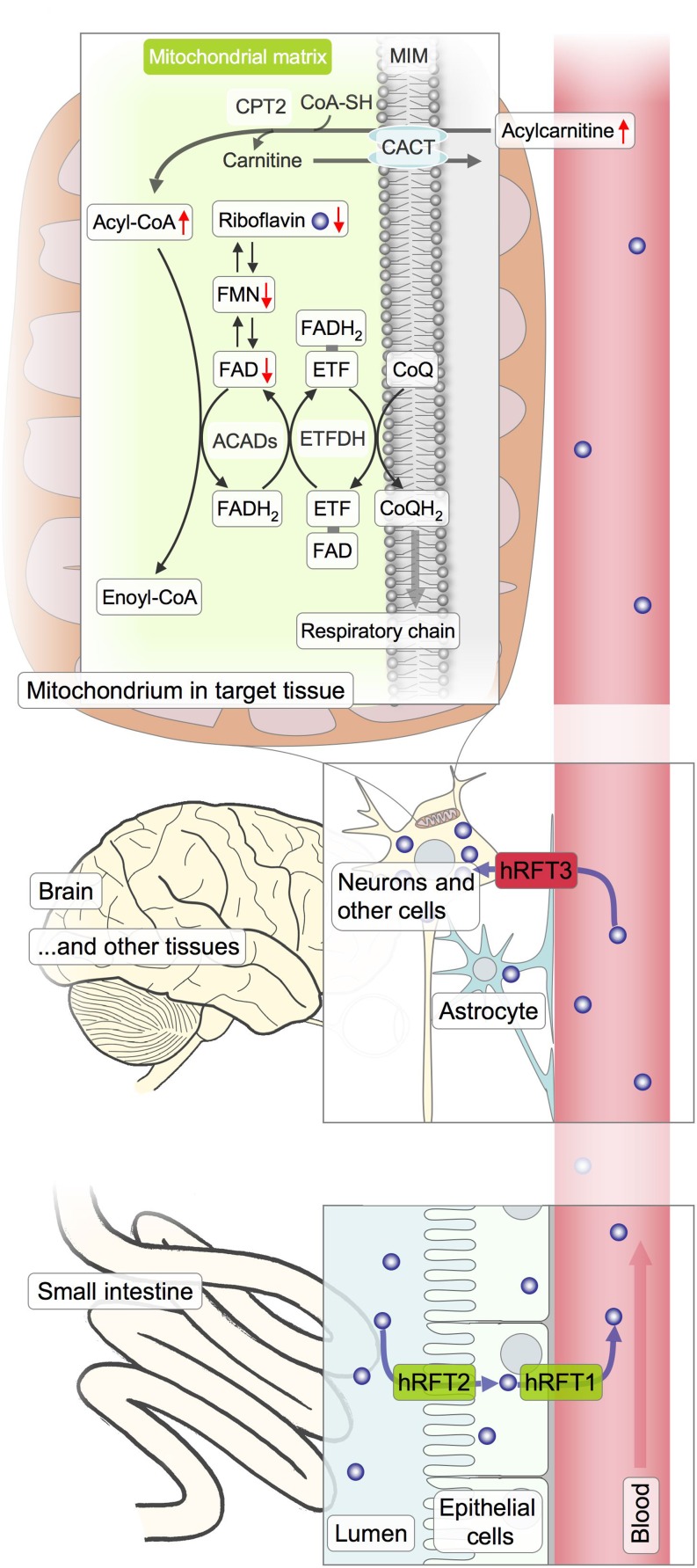Fig. 3.
Potential role of hRFT3 in riboflavin metabolism. Riboflavin is taken up from nutrition and passed through into the blood by intestinal epithelial cells. Proposed transporters involved are hRFT1 and hRFT2. Uptake into the target cells might occur to a small amount via passive diffusion but likely essentially relies on specific transport systems. hRFT3 is highly expressed in the brain, concordant with an important role in brain riboflavin homeostasis. In the cells, riboflavin is converted into the dehydrogenation reaction coenzymes FMN and FAD. Lack of FAD results in impaired acyl-CoA dehydrogenation leading to an accumulation acylcarnitines as found in ETFDH or ETF mutant individuals presenting with MADD. Superfluous riboflavin undergoes renal excretion. CACT, carnitine-acylcarnitine tranlsocase; CPT2, carnitine O-palmitoyl transferase 2; ETF, electron transfer flavoprotein; ETFDH, ETF-dehydrogenase; MIM, mitochondrial inner membrane

